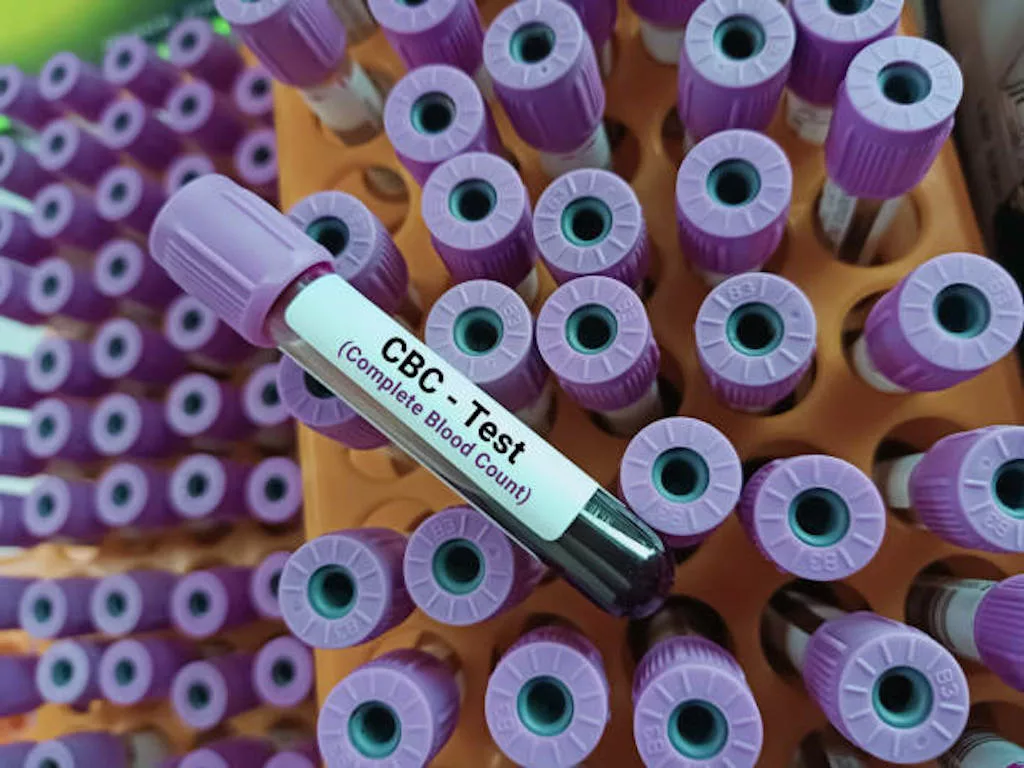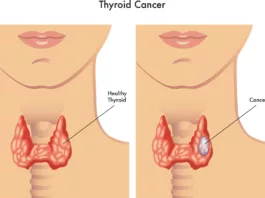Burkitt Lymphoma is a rare, fast-growing type of blood cancer that is more common in young people. It affects the B cells of your immune system. Burkitt lymphoma spreads aggressively but often responds well to treatment if started early.
What is Burkitt Lymphoma?
Burkitt lymphoma is a high-grade blood cancer of the lymphatic system. It affects B cells, white blood cells that help fight infection by making antibodies. This disease is named after Dr. Denis Burkitt, a British surgeon who discovered cancerous tumors in African children.
Though it’s rare, Burkitt lymphoma is one of the most aggressive forms of non-Hodgkin lymphoma, especially common in children and young adults. Around 1,26,000 people are living with Burkitt lymphoma. Globally, 19,000 new cases of Burkitt lymphoma emerged in 2021 alone. The cases have seen a staggering 90% rise since the 1990s.1Dou, C., Sang, Y., Zhu, H., & Cao, C. (2025). 1990–2041 Global burden of Burkitt lymphoma with 20 years forecast: A systematic analysis using the Global Burden disease of study of 2021. SAGE Open Medicine, 13. https://doi.org/10.1177/20503121241313083
What causes Burkitt Lymphoma?
The exact cause of Burkitt lymphoma is still unknown. Over the years, however, researchers have identified a few major biological events that often occur together when Burkitt lymphoma develops.
MYC Translocation:
The primary trigger behind Burkitt lymphoma is a change in your DNA called a chromosomal translocation. This means a piece of one chromosome gets moved to another spot where it doesn’t belong. Almost every person with Burkitt lymphoma (95% of cases) has a translocation involving the MYC gene on chromosome 8. It’s usually placed next to the immunoglobulin heavy chain gene on chromosome 14.
This abnormal pairing, which is often written as t(8;14), turns MYC “on” all the time. MYC controls how fast cells grow and divide, so when it’s always active and overexpressing, your B-cells start dividing out of control. Moreover, other gene mutations can further block apoptosis or cell death, which lets cancerous cells survive and expand.
Immune Dysfunction:
In Burkitt lymphoma, the immune system undergoes dysfunction. This often happens when your immune system is already weakened. For example, if you have HIV or you’ve had an organ transplant, your body may not be able to control how B-cells behave. The same happens when you contract malaria, and it makes you more susceptible to cancer caused by the Epstein-Barr virus. Damaged cells continue to grow and multiply, eventually turning into cancer.2Ruzinova, M. B., Caron, T., & Rodig, S. J. (2010). Altered Subcellular Localization of c-Myc Protein Identifies Aggressive B-cell Lymphomas Harboring a c-MYC Translocation. The American Journal of Surgical Pathology, 34(6), 882–891. https://doi.org/10.1097/pas.0b013e3181db83af
Risk Factors for Burkitt Lymphoma
Several well-established risk factors for Burkitt lymphoma have been identified.
Age:
Burkitt lymphoma affects more children and young adults, accounting for nearly 30% of all childhood lymphomas. Meanwhile, it represents less than 1% of all non-Hodgkin lymphomas in adults.3National Cancer Institute. (n.d.). Adult Non-Hodgkin Lymphoma Treatment (PDQ®)–Health Professional Version. Retrieved from https://www.cancer.gov/types/non-hodgkin/hp/adult-nhl-treatment-pdq
Sex:
Males are at 3 to 4 times greater risk of developing Burkitt lymphoma than females, and this has been seen across various regions.
Geography:
Burkitt lymphoma is most common in Africa. Here, the disease affects 3 to 6 children per 100,000 each year. Children are usually diagnosed by 6 years of age.
North America and Europe see about 2.5 to 4 cases per million children annually, with an average age of diagnosis around 30.4Davila, M., & Mims, D. (2020). Childhood cancer epidemiology in low-income countries: Burkitt lymphoma rates in sub-Saharan Africa. Childhood Cancer, 35(2), 123–131.
Genetic Factors:
The most common mutations involve the MYC gene, which affects nearly all cases. Other mutations include:
- TP53 (tumor suppression)
- ID3 (B-cell regulation)
- TCF3 (B-cell signaling)
- CCND3 (cell cycle control)
- ARID1A (chromatin remodeling)
- SMARCA4 (gene expression)
- DDX3X (RNA processing)
Epstein-Barr Virus:
The Epstein-Barr virus is the causative agent behind infectious mononucleosis. For most people, it goes away without causing any long-term problems. But in some individuals, especially those with weakened immunity, it can cause cancer. The virus is found in about 95% of Burkitt lymphoma cases in parts of Africa. In other parts of the world, such as the U.S. or Europe, it is still involved in 30% of cases.5Epstein, M. A., & Achong, B. G. (1964). The identification of Epstein–Barr virus in cultured cells of Burkitt’s lymphoma specimens. Nature.
HIV Infection:
In the United States, Burkitt lymphoma occurs in people with HIV at a rate of 22 cases per 100,000 person-years, which is much higher than in the general population.6Mbulaiteye, S. M., Anderson, W. F., Bhatia, K., Rosenberg, P. S., Linet, M. S., & Devesa, S. S. (2010). Trimodal or bimodal age-specific incidence patterns for Burkitt lymphoma in the United States, 1973–2005. International Journal of Cancer, 126(7), 1732–1739.
Medications:
Medications known as immunosuppressants reduce inflammation and the overactivity of the immune system. They’re commonly prescribed for people with chronic conditions like:
- Organ transplantation
- Rheumatoid arthritis
- Lupus
- Psoriasis
- Crohn’s disease
- Ulcerative colitis
- Severe asthma
- Eczema
However, they also weaken your immune system’s ability to find and destroy abnormal cells like early cancer cells. Over time, this can increase your risk for lymphomas, including Burkitt lymphoma.
Organ Transplantation:
Transplant recipients must take strong immunosuppressive drugs, often for the rest of their lives. This is why people who have had organ transplants are significantly more likely to develop blood cancers like Burkitt lymphoma.
Malaria:
Malaria is caused by the Plasmodium species transmitted through mosquito bites. Burkitt lymphoma is endemic in areas where malaria is common, e.g., Africa, particularly in childhood. While the infection itself doesn’t directly cause cancer, chronic malaria weakens the immune system over time, especially against viruses and cancer.7Karimi, P., Birmann, B. M., Anderson, L. A., McShane, C. M., Gadalla, S. M., Sampson, J. N., & Mbulaiteye, S. M. (2018). Risk factors for Burkitt lymphoma: a nested case‐control study in the UK Clinical Practice Research Datalink. British Journal of Haematology, 181(4), 505–514. https://doi.org/10.1111/bjh.15229
Types of Burkitt Lymphoma
Burkitt lymphoma has three main types: endemic, sporadic, and immunodeficiency-related. Knowing the type of Burkitt lymphoma you have helps doctors choose the best treatment options for you.8Chatterjee, T., Gupta, D., Bharadwaj, R., & Madan, R. (2014). Burkittts Lymphoma Revisited: Series of Three Cases with Varied Clinical Presentation. Indian Journal of Hematology and Blood Transfusion, 30(S1), 215–218. https://doi.org/10.1007/s12288-014-0334-z
| Feature | Endemic | Sporadic | Immunodeficiency-Related |
| Region | Africa, Papua New Guinea | United States, Europe | Worldwide |
| Epstein-Barr Virus Association | 95% | 20-30% | 30-50% |
| Common Age Group | Children aged 4-7 | Both children & adults | Adults in their 30s-60s |
| Location of Lesions | Jaw, face | Abdomen, pelvis | Lymph nodes, brain, spinal cord, and bone marrow |
| Prognosis (if treated) | 70-90% survival in kids | >90% in kids, variable and lower in adults | Poorer, but it depends on immune status |
Stages of Burkitt Lymphoma
The diaphragm is the muscular dome that separates your chest (thoracic cavity) from your abdomen (abdominal cavity). It is an anatomical reference point used in lymphoma staging. Whether the disease is located above, below, or on both sides of the diaphragm helps determine how far it has spread.
Stage I of Burkitt Lymphoma:
At this stage, the lymphoma is limited to one location. This could be a single group of lymph nodes or one “extranodal” tumor outside the lymphatic system. There’s no sign that the disease has spread across the diaphragm. This is the most localized and earliest form of Burkitt lymphoma, and with the right treatment, outcomes are usually excellent.
Stage II of Burkitt Lymphoma:
The cancer has moved to two or more areas, but it’s still on one side of your diaphragm, either all above it (in your chest) or all below it (in your abdomen or pelvis). You might have a tumor in one organ and some nearby lymph nodes involved. This stage is still considered early, and with prompt treatment, the prognosis can be very good.
Stage III of Burkitt Lymphoma:
This is when the lymphoma has spread to both sides of the diaphragm, so it’s now in both the chest and the abdomen, or in lymph nodes above and below that dividing line. It may also involve the chest cavity (like a mass near the lungs) or areas near your spine. Even though the disease is more widespread at this point, Burkitt lymphoma still responds well to treatment, even in Stage III.
Stage IV of Burkitt Lymphoma:
Stage IV means Burkitt lymphoma has reached deeper parts of your body, specifically the bone marrow or the central nervous system, such as your brain or spinal cord. You might feel exhausted, bruise easily, or get frequent infections (if the bone marrow is involved), or experience headaches, vision changes, or numbness (if the nervous system is affected). If more than 25% of your bone marrow is filled with lymphoma cells, doctors may classify it as Burkitt leukemia. Even at this advanced stage, aggressive chemotherapy — especially when started quickly — can lead to strong responses.9Non-Hodgkin Lymphoma Stages | Staging Non-Hodgkin Lymphoma. (2022). Cancer.org. https://www.cancer.org/cancer/types/non-hodgkin-lymphoma/detection-diagnosis-staging/staging.html
Symptoms of Burkitt Lymphoma
The signs you notice will depend on where the cancer starts in your body. Burkitt lymphoma patients may present with a lump that seemingly appeared out of nowhere. Most patients come in with a rapidly enlarging mass in the abdomen, jaw, or neck. Overall, Burkitt lymphoma signs and symptoms include:
Swollen Lymph Nodes:
You may notice painless lumps in areas like your neck, underarms, or groin. These are swollen lymph nodes, and while not always painful, they can grow quickly. Swollen lymph nodes are more commonly seen in adults with Burkitt lymphoma than in children.
Jaw or Facial Mass:
In endemic areas, this jaw or facial mass is the most common first sign, seen in over 50% of cases. This can appear as:
- A swollen jaw, often on one side
- Facial asymmetry or pressure near the eye (orbital involvement)
- Tooth loosening or facial pain
- Rarely is there the involvement of both upper and lower jawbones

Abdominal Symptoms:
Abdominal symptoms are most common in sporadic cases from North America and Europe. You might feel:
- A visible or painful lump in your abdomen
- Bloating
- Stomach cramps or pressure
- Nausea or vomiting
- Loss of appetite or feeling full too quickly
- Constipation
- Diarrhea
- Fluid accumulation (ascites)

B Symptoms:
Although not as typical as in other types of lymphoma, some people with Burkitt lymphoma may experience:
- Fever without a clear cause
- Night sweats (drenching your clothes or sheets)
- Weight loss of over 10% of body weight over 6 months (without a plausible explanation)
Neurological Symptoms:
Sometimes, the lymphoma spreads to your brain or spinal cord and results in progressive neurological symptoms. This is more common in advanced stages and can cause:
- Headaches that don’t go away
- Blurry or double vision
- Facial weakness or numbness, especially if cranial nerves are involved
- Seizures
- Weakness in the legs or trouble walking (if the spinal cord is affected)
Bone Marrow Involvement:
If Burkitt lymphoma reaches your bone marrow, you may notice signs and symptoms such as:
- Feeling very tired or weak
- Bruising easily or bleeding more than usual
- Getting infections more often, or taking longer to recover
- If more than 25% of the bone marrow is affected, the disease may be classified as Burkitt leukemia10Lin, Y., Pan, Y.-H., Li, M.-K., Zong, X.-D., Pan, X.-M., Tan, S.-Y., & Guo, Y.-W. (2021). Clinical presentation of gastric Burkitt lymphoma presenting with paraplegia and acute pancreatitis: A case report. World Journal of Gastroenterology, 27(45), 7844–7854. https://doi.org/10.3748/wjg.v27.i45.7844
How is a Burkitt Lymphoma diagnosis established?
This is one of the fastest-growing cancers known in humans. It can double in just 24 to 48 hours, which is why early diagnosis is necessary for appropriate treatment.
History & Physical Exam:
When taking a history, doctors ask you about how fast the lump grew, as well as any associated symptoms. On physical examination, they look for visible or palpable masses, signs of lymph node enlargement, and organ swelling.
Lab Investigations:
Blood tests give doctors an idea about your overall health and how Burkitt lymphoma might be affecting your organs. These include:
- A complete blood count or CBC reflects an abnormally high white blood cell count, as well as low red blood cells and platelets.
- LDH is a blood marker that is very high in aggressive cancers like Burkitt lymphoma
- Renal function tests, a serum electrolyte panel, and serum uric acid levels detect early signs of tumor lysis syndrome.
- Liver function tests and beta-2 microglobulin assess liver function.
- A coagulation profile to assess if your blood can clot adequately.
- An infectious disease panel for HIV, hepatitis, Epstein-Barr virus, and malaria is done.

Imaging:
Imaging helps your medical team see where the lymphoma is located and how far it has spread. These scans also help guide Burkitt lymphoma biopsies and identify urgent complications.
- X-rays or ultrasounds may be done first if there are signs of swelling or pain in certain areas.
- CT scans of your chest, abdomen, and pelvis are the main imaging tests used for the diagnosis of Burkitt lymphoma.
- Head and spine CT or MRI scans are used if doctors think the brain or spinal cord might be involved.
- PET scans can show how active the cancer is in different parts of the body.
- An echocardiogram or MUGA scan is done before chemo to check if your heart is strong enough for treatment.
Biopsy:
This is the definitive step in diagnosing Burkitt lymphoma. A biopsy involves removing a sample of affected tissue to be examined in detail. This is how the exact type of cancer is confirmed. The biopsy sample for Burkitt lymphoma may come from:
- A lymph node or tumor mass in the jaw, abdomen, or elsewhere
- Bone marrow, if blood counts are low or there’s suspected spread
- Spinal fluid, through a lumbar puncture, is obtained if there are neurologic symptoms
Once collected, the tissue is sent to a pathologist, who will:
- Look under the microscope for the classic “starry-sky” appearance
- Perform immunohistochemistry to check for B-cell markers like CD20, CD10
- Run flow cytometry to analyze surface proteins on the cells
- Use FISH or PCR testing to detect a MYC gene translocation11Kanbar, A. H. (2024, October 28). Burkitt Lymphoma and Burkitt-like Lymphoma Workup: Approach Considerations, Diagnostic Studies, Radiologic Studies. Medscape.com; Medscape. https://emedicine.medscape.com/article/1447602-workup
Treatment for Burkitt Lymphoma
Unlike many other cancers, Burkitt lymphoma has a very high proliferation rate because its tumor cells can double in number in as little as 24-48 hours. That means even a small delay in treatment can lead to rapid disease progression.
Emergency Treatment:
Burkitt lymphoma cells break down quickly. They can overwhelm your organs, especially your kidneys, which can lead to tumor lysis syndrome. This is why you may get emergency treatment within 24-48 hours of presenting to a hospital:
- IV fluids to flush your system
- Medications like allopurinol or rasburicase can lower your uric acid levels
- Electrolyte correction if your potassium or phosphorus levels are abnormal
- Steroids like prednisone, to slow the tumor until biopsy results are back
Chemotherapy Regimens:
Burkitt lymphoma needs intensive, short bursts of intense chemo, sometimes combined with targeted drugs like rituximab. If your disease is caught early, especially in kids or young adults, you might only need 2-4 cycles. However, if the disease is more advanced, treatment can extend to 8 or more aggressive cycles.
| Regimen | Drugs | Use |
| CODOX-M/IVAC | Dose-adjusted Etoposide, Prednisone, Vincristine, Cyclophosphamide, Doxorubicin + Rituximab | This is a commonly used regimen for children, teenagers, and young adults who have moderate to high-risk Burkitt lymphoma. |
| R-hyper-CVAD | Dose-adjusted Etoposide, Prednisone, Vincristine, Cyclophosphamide, Doxorubicin + Rituximab | Doctors often use this for adults who are strong enough to handle an aggressive treatment approach. |
| DA-EPOCH-R | Dose-adjusted EtoposidePrednisoneVincristineCyclophosphamideDoxorubicin + Rituximab | This is sometimes chosen for older or frail patients who may not tolerate the more intense regimens. |
Prophylaxis:
Even if you feel fine neurologically, CNS prophylaxis is standard care to protect your brain and spinal cord. This involves intrathecal chemotherapy, where drugs like methotrexate or cytarabine are injected directly into your spinal fluid.
Supportive Care:
Supportive care helps your body keep up with the effects of chemotherapy, such as:
- G-CSF injections to help your white cells recover
- Blood or platelet transfusions if your blood counts drop to dangerous levels
- Strong anti-nausea meds
- Antibiotics if you’re at risk of infection
- Regular heart, kidney, and liver monitoring during chemotherapy
Relapse Treatment:
If Burkitt lymphoma returns, doctors may consider:
- Salvage chemo regimens like R-GDP, R-ICE, or high-dose cytarabine
- Stem cell transplant, if you’re eligible
- Targeted therapies in clinical trials (like blinatumomab or anti-MYC agents)
- Palliative care, if intensive chemo isn’t an option anymore12Naing, P. T., Kaur, A., & Lynch, D. T. (2025, February 17). Burkitt Lymphoma. Nih.gov; StatPearls Publishing. https://www.ncbi.nlm.nih.gov/books/NBK538148/#:~:text=Sporadic%20Burkitt%20Lymphoma,-The%20primary%20site&text=%5B1%5D%20Patients%20present%20with%20abdominal,weight%20loss%2C%20night%20sweats).
Prognosis for Burkitt Lymphoma
Burkitt lymphoma has one of the best responses to chemotherapy among all types of cancer. In children and young adults, cure rates can reach up to 90% with prompt treatment.
In adults, especially those with early-stage disease and good general health, long-term survival rates are around 50-70%. If the disease has spread to your bone marrow or nervous system, or has relapsed, outcomes are more guarded. When it comes to severe cases, survival time can be 30 months for adults, but as low as 5 months for the elderly.13Mukhtar, F., Paolo Boffetta, Risch, H. A., Park, J. Y., Bubu, O. M., Womack, L., Tran, T. V., Zgibor, J. C., & Luu, H. N. (2016). Survival predictors of Burkitt’s lymphoma in children, adults and elderly in the United States during 2000–2013. International Journal of Cancer, 140(7), 1494–1502. https://doi.org/10.1002/ijc.30576
Conclusion
Burkitt lymphoma is a rare, aggressive type of non-Hodgkin lymphoma that affects B cells. It is one of the fastest-growing human cancers. It commonly affects children and young adults and presents as a rapidly enlarging lump in the jaw, neck, or abdomen. There are three main types: endemic, sporadic, and immunodeficiency-related. While it spreads quickly, Burkitt lymphoma often responds well to prompt, aggressive chemotherapy.
Refrences
- 1Dou, C., Sang, Y., Zhu, H., & Cao, C. (2025). 1990–2041 Global burden of Burkitt lymphoma with 20 years forecast: A systematic analysis using the Global Burden disease of study of 2021. SAGE Open Medicine, 13. https://doi.org/10.1177/20503121241313083
- 2Ruzinova, M. B., Caron, T., & Rodig, S. J. (2010). Altered Subcellular Localization of c-Myc Protein Identifies Aggressive B-cell Lymphomas Harboring a c-MYC Translocation. The American Journal of Surgical Pathology, 34(6), 882–891. https://doi.org/10.1097/pas.0b013e3181db83af
- 3National Cancer Institute. (n.d.). Adult Non-Hodgkin Lymphoma Treatment (PDQ®)–Health Professional Version. Retrieved from https://www.cancer.gov/types/non-hodgkin/hp/adult-nhl-treatment-pdq
- 4Davila, M., & Mims, D. (2020). Childhood cancer epidemiology in low-income countries: Burkitt lymphoma rates in sub-Saharan Africa. Childhood Cancer, 35(2), 123–131.
- 5Epstein, M. A., & Achong, B. G. (1964). The identification of Epstein–Barr virus in cultured cells of Burkitt’s lymphoma specimens. Nature.
- 6Mbulaiteye, S. M., Anderson, W. F., Bhatia, K., Rosenberg, P. S., Linet, M. S., & Devesa, S. S. (2010). Trimodal or bimodal age-specific incidence patterns for Burkitt lymphoma in the United States, 1973–2005. International Journal of Cancer, 126(7), 1732–1739.
- 7Karimi, P., Birmann, B. M., Anderson, L. A., McShane, C. M., Gadalla, S. M., Sampson, J. N., & Mbulaiteye, S. M. (2018). Risk factors for Burkitt lymphoma: a nested case‐control study in the UK Clinical Practice Research Datalink. British Journal of Haematology, 181(4), 505–514. https://doi.org/10.1111/bjh.15229
- 8Chatterjee, T., Gupta, D., Bharadwaj, R., & Madan, R. (2014). Burkittts Lymphoma Revisited: Series of Three Cases with Varied Clinical Presentation. Indian Journal of Hematology and Blood Transfusion, 30(S1), 215–218. https://doi.org/10.1007/s12288-014-0334-z
- 9Non-Hodgkin Lymphoma Stages | Staging Non-Hodgkin Lymphoma. (2022). Cancer.org. https://www.cancer.org/cancer/types/non-hodgkin-lymphoma/detection-diagnosis-staging/staging.html
- 10Lin, Y., Pan, Y.-H., Li, M.-K., Zong, X.-D., Pan, X.-M., Tan, S.-Y., & Guo, Y.-W. (2021). Clinical presentation of gastric Burkitt lymphoma presenting with paraplegia and acute pancreatitis: A case report. World Journal of Gastroenterology, 27(45), 7844–7854. https://doi.org/10.3748/wjg.v27.i45.7844
- 11Kanbar, A. H. (2024, October 28). Burkitt Lymphoma and Burkitt-like Lymphoma Workup: Approach Considerations, Diagnostic Studies, Radiologic Studies. Medscape.com; Medscape. https://emedicine.medscape.com/article/1447602-workup
- 12Naing, P. T., Kaur, A., & Lynch, D. T. (2025, February 17). Burkitt Lymphoma. Nih.gov; StatPearls Publishing. https://www.ncbi.nlm.nih.gov/books/NBK538148/#:~:text=Sporadic%20Burkitt%20Lymphoma,-The%20primary%20site&text=%5B1%5D%20Patients%20present%20with%20abdominal,weight%20loss%2C%20night%20sweats).
- 13Mukhtar, F., Paolo Boffetta, Risch, H. A., Park, J. Y., Bubu, O. M., Womack, L., Tran, T. V., Zgibor, J. C., & Luu, H. N. (2016). Survival predictors of Burkitt’s lymphoma in children, adults and elderly in the United States during 2000–2013. International Journal of Cancer, 140(7), 1494–1502. https://doi.org/10.1002/ijc.30576





